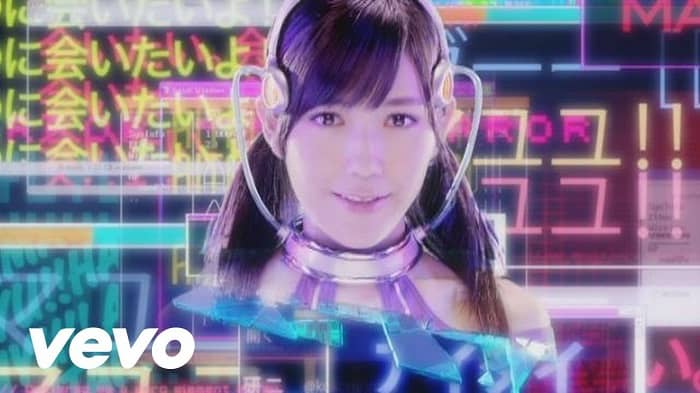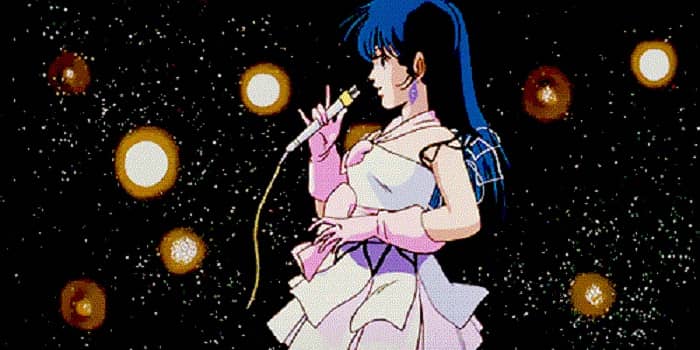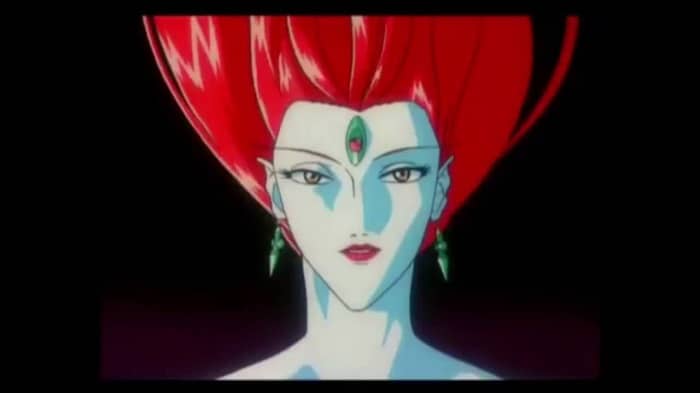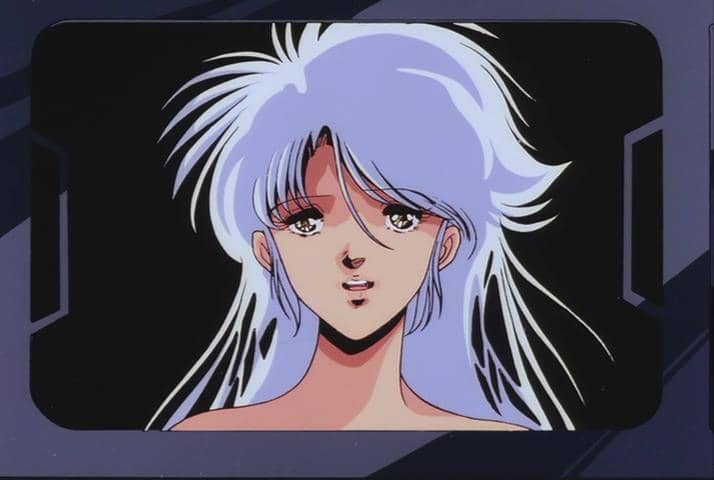Her Master’s Voice: The World of Virtual Idols, Part I
The concept of ‘Virtual Idols’ that I’m looking to describe here is something of a slippery and multi-faceted notion — not unlike the culture that surrounds their real-life counterparts, to a large degree! The elements form a sort of loose meshwork of overlapping scenes, which often intersect and change as they progress.
So, am I basically attempting to define the indefinable here? Perhaps! There are certain recurring themes which connect a lot of it together, so I’ll keep those things in mind as I sketch out my ongoing exploration… and with any luck, that should be enough to make it all clear.
While there are theoretically no limits where we could go with this, it’s also something very much tied to one location — and yes, it’s exactly where you expect: the nation of Japan. But before we can fully understand this phenomenon of Japanese virtual idols, we first need to get acquainted with non-virtual idols, which form such a major part of pop music culture there. That can be a bit challenging in itself, actually! While not entirely different from pop idols in other parts of the world, the term ‘Idol’ has a much more specific usage and cultural history within Japan. There are various degrees of being an idol performer as well, as the context has evolved somewhat over time… which can be confusing for newcomers, or for those who follow just one aspect of overall fandom. I’ll try to make it clearer as I go, but suffice to say that being an idol definitely involves more than simply being a singer of pop music, in Japan!
First, let’s try to very briefly pin down a few of the most important qualities of an idol.
’80s/’90s idol duo: Wink – “Kitto Atsui Kuchibiru ~Remain~”
A couple of things put them in a different category from regular pop/rock artists. In fact, it’s common in Japan to specifically market acts as either Artists or Idols. That doesn’t mean that idols aren’t doing anything artistic exactly, but unlike singer/songwriters or members of bands it’s very rare for idols to actually compose their own music. They usually have managers and/or a separate production team who provide all the songs and choreography, leaving the emphasis almost entirely on performance.
I should also mention that, although there are indeed male idols, the vast majority are females. (Most male idols launch within the boy-band format, and it’s very rare that they arise in any other way… since most male soloists don’t tend to be presented in such a manner.) And, at the more indie or underground level of the idol scene, they pretty much don’t exist at all. So, in the most fully realized sense of the term, we’re talking about generally young Japanese girl singers who specifically debut as ‘idols.’
The key thing in all this though, is that their performance roles usually go far, far beyond just singing and dancing — often involving a wide range of multimedia activities, and a strict code of behavior while they’re at it. Ultimately the aim is to bring an uplifting or inspiring mood to the audience, and for fans to feel they have a special connection to their favorite idols, as they strive to enthusiastically project the best of themselves to the world — not just musically and visually, but also a kind of idealized or exaggerated version of who they are (whether they’re onstage or off). In fact, this is often the most important aspect of being an idol. Hence, when people talk about there being a sort of ‘magic’ to idols, it means that they have effectively achieved exactly this goal.
Lynn Minmay
My first introduction to idol singers was NOT actually based in reality at all — not exactly a virtual idol, but definitely not real, either! — appearing in animated form. The idol in this case was Rin Minmei (aka: Lynn Minmay) from the Super Dimension Fortress Macross anime — or season one of Robotech, as it was known to television audiences here in North America.
That might have been many people’s introduction to it all, and even to watching anime in general, since very little was available over here in 1985. [Interestingly enough, they used the Japanese name convention of putting the family name (Lynn) before her given name (Minmay) — whether this was to acknowledge her Japanese descent, or simply because they liked the sound of it, I’m not sure!]
“Macross Flash Back 2012” – 30-minute music OVA featuring Lynn Minmay
Her character ends up having a pivotal role in the story, since she is the leading idol of her time and as such presents a powerful and mystifying presence to the alien Zentradi forces (who have been bred to leave any meaningful sense of emotion or culture behind)… and who find themselves strangely overwhelmed by her performances as a result. It’s no coincidence that she is an idol, rather than some other type of emotive singer, and having such an effect — it makes the whole plot device more immediately credible, given the devotion that idols inspire amongst their fans in the everyday world. After all, this is about the POWER of idols… not their technical singing ability.
Sharon Apple (Macross)
The first full-on virtual idol to really capture international attention however came ten years later with the arrival of Sharon Apple — from 1995’s follow-up entry in the Macross anime series, the four-part video release called Macross Plus. She is very different from Minmay, in numerous ways! She has a much more mature look and feel, although more importantly Sharon Apple is not even remotely a human being at all, but rather a computer system inside of a black box projected as a hologram to the audience.
The conceit is that her system is supposed to have real human-like emotions, but this is a deliberate falsehood. Since that part of her programming is lacking, the woman who acts as her producer has to directly connect to her, in order to give her the illusion of emotional resonance. Beyond that, the audience is fully aware that she is an artificial being, and embraces that about her.
Yoko Kanno/Sharon Apple – Esta detras de Sharon Apple
However, when someone decides to upgrade Sharon’s system in an ill-fated attempt to compensate for the shortcomings of her AI, she becomes a danger to everyone around her and ultimately a threat that needs to be stopped at all costs… Even though at no point is Sharon Apple really what we could call a complete person. Leaving the state of her physical reality aside, part of what is interesting about her is that people clearly WANT to believe in her, despite her obviously artificial nature.
Megazone 23, Part 1: Eve Tokimatsuri
Sharon Apple isn’t actually the first virtual idol to appear in anime form, though. There’s at least one who is a bit less famous, but still quite worthy of note, and who appeared around the same time as Minmay (just shortly after, here in the real world at least!), and was even brought to us by the same production company: the mysterious singing starlet known as EVE (aka: Eve Tokimatsuri) from the three-part video release Megazone 23.
Although her persona has been based on that of a real person, a fact which remains unbeknownst to the public, Eve is actually part a computer program created by the government to distract and deceive citizens from realizing the true nature of their world — which appears to be present-day Japan of the 1980’s, but in fact is not the surface of Earth at all, but rather a facsimile of the distant past. So, unlike Sharon A., people do believe Eve to be a real flesh-and-blood person… and indeed, the whole point is for them to not suspect otherwise.
EVE – “Saved by Science” & “The Future is NoW”
Despite the deceptive reason for her existence, Eve is the one who helps the main character discover the full truth of his surroundings. (And again, some centuries later, she is similarly helpful to the main character in the double-episode Part Three.) Quite the opposite to Sharon Apple’s situation, the AI element remains more benevolent — and it’s really the militaristic government who can’t be trusted.
And of course, it makes sense that idols (virtual or not) SHOULD be friendly, anyway… [Even Sharon was nice enough, before somebody decided to mess with her!]
However, to begin to experience the connection people have with idols, we need a lot more interactivity than anime can offer. But by the late 90s technology was on the horizon that would bring us closer to such a simulated state…!
Idol: Mayu Watanabe – “Hikaru Monotachi”
Read on in Her Master’s Voice: The World of Virtual Idols, Part II.
John MacMaster lives in Halifax, Nova Scotia.



